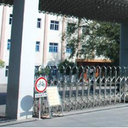[Mucosa advancement flap anoplasty in treatment of chronic anal fissures: a prospective, multicenter, randomized controlled trial].
Mots clés
Abstrait
BACKGROUND
Anal fissure is one of the most common anal-rectum diseases, and approximately 10 percent patients with chronic anal fissure ultimately receive surgery. Relieving postoperative pain and protecting functions of the sphincter are central issues for coloproctologists.
OBJECTIVE
To evaluate the efficacy and safety of anoplasty in the treatment of chronic anal fissures.
METHODS
In this prospective, multicenter, randomized controlled trial, 120 adult patients with chronic anal fissure were referred from Department of Coloproctology of Yueyang Hospital of Integrated Traditional Chinese Medicine Affiliated to Shanghai University of Traditional Chinese Medicine, Shanghai Ninth People's Hospital Affiliated to Shanghai Jiao Tong University School of Medicine and Shanghai Municipal Hospital of Traditional Chinese Medicine. The patients were enrolled from January 2009 to April 2010 and randomly divided into study (mucosa advancement flap anoplasty, abbreviated as anoplasty) group and control (fissurectomy) group. The two groups were assessed separately, and the main outcome measures were observed for 2 weeks, with a short-term follow-up for 6 weeks.
METHODS
Degree of pain, haemorrhage and anal canal pressure were observed and recorded preoperatively, and on the third day, the fourteenth day and the sixth week postoperatively. The wound healing time was also recorded. Surgical complications of the two groups were recorded and compared on the third day and the sixth week postoperatively. The curative effects associated with the surgery were analyzed on the fourteenth day and the sixth week after surgery and the therapeutic results were evaluated.
RESULTS
Three patients were dropped out due to the early discharge from hospital and losing connection (1 in study group and 2 in control group). Overall the surgery showed that the anoplasty group had better results than the fissurectomy group in the curative effect on the sixth week after operation (P<0.05). Time of wound healing in the anoplasty group was (17.22 ± 4.41) d and was better than (21.24 ± 7.44) d of the fissurectomy group (P<0.05). Concerning the relief of wound pain, the anoplasty group achieved better results than the fissurectomy group at the third day, the fourteenth day and the sixth week after operation (P<0.05). Anoplasty reduced bleeding and had better efficacy than the fissurectomy at the third day and the fourteenth day after operation (P<0.05), however, there was no statistical difference at the sixth week after operation (P>0.05). There were no significant differences in relieving the anal canal pressure (P>0.05) and the surgical complications (dysuria, edema of anal margin, fever, infection, anal incontinence and anal deformation) between the two groups (P>0.05). None of the patients suffered postoperative complications by the sixth week after operation. Furthermore, there was no recurrence in either of the two groups at six weeks after operation.
CONCLUSIONS
The results indicate that anoplasty for chronic anal fissures has advantages such as better therapeutic effects, less postoperative pain, a shorter healing time and no incidence of anal incontinence.



